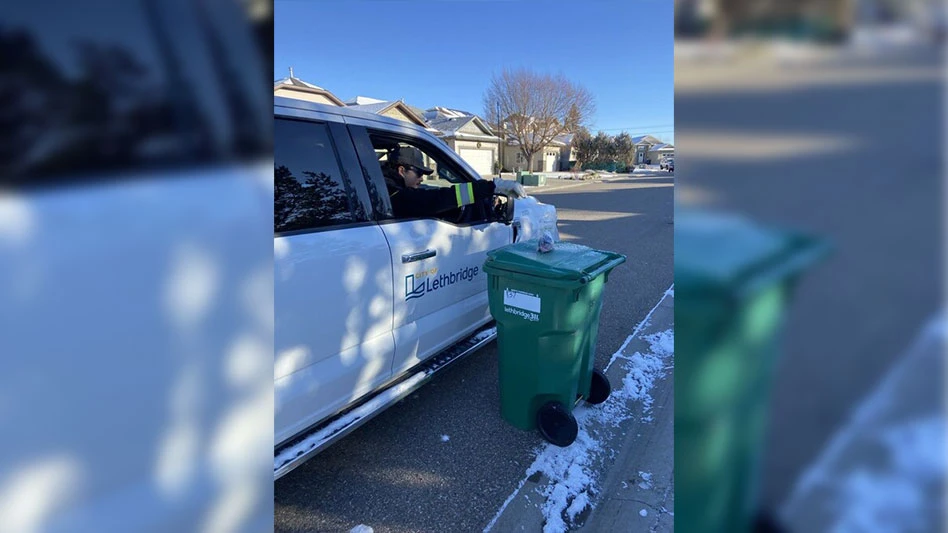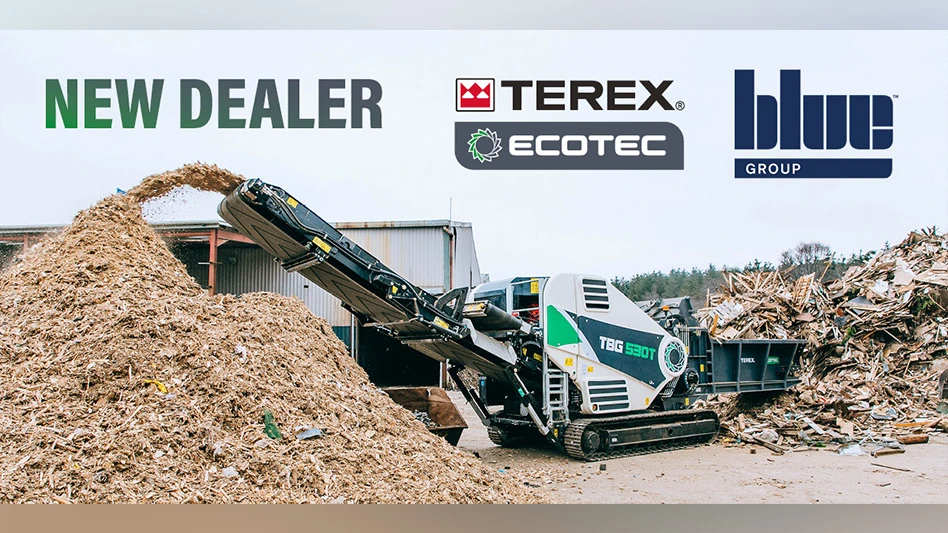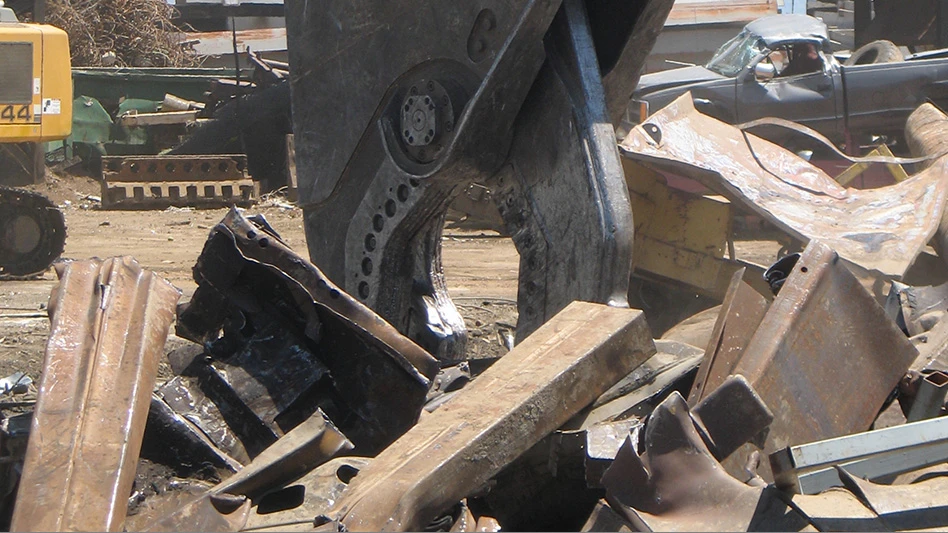
Battery fires continue to pose dangers for waste and recycling operations, and industry leaders are coming together at the Battery and Critical Metals Recycling Conference (June 9-10 in Nashville, Tennessee) to discuss solutions for tackling this ongoing issue.
During the Preparing for the Unexpected: How to Safely Handle Batteries session, June 10 from 3:30-4:30 p.m. CT, Susan Eppes, corporate safety manager at Waste Connections; Kevin Dillon, co-founder, chief marketing officer and chief sales officer at ERI; Andrew Gardner, plant manager at Ascend Elements Inc.; and David Lewis, EH&S director at WM, will share best practices for safely handling and disposing of batteries while reducing risks like contamination and fire hazards.
In anticipation of the session, Recycling Today spoke with Susan Eppes about how to prepare for the unexpected, how the industry is addressing the growing problem of battery-related fires and what attendees can expect to learn from this panel discussion.
Recycling Today (RT): Waste and recycling facility fires caused by improper battery disposal are a growing concern. Can you share some potential risks associated with unintentionally receiving batteries?
Susan Eppes (SE): Fires caused by improper battery disposal continue to pose a significant threat to the waste and recycling industry. For example, a single improperly disposed battery can spark a truck fire in a residential neighborhood, and that happens more often than one might think. Whether it’s a truck fire or a facility fire, if a fire isn’t contained within five minutes, it can lead to major losses. Rebuilding a single-stream recycling facility can cost around $1 million per ton, while the average garbage truck costs around $500,000.
With about 360 material recovery facilities (MRFs) in the U.S. processing municipal curbside collection and commercial recycling, the risk is widespread. Between 2019 and 2023, there were an estimated 25,000 lithium-ion battery-related-fires at single-stream MRFs in the U.S. Annually, these building and equipment losses cost the industry approximately $1.2 billion. Making matters worse, insurance coverage continues to be difficult to obtain, and when it is available, premiums are often 10- to 50-times higher than previous costs, according to RRS and the National Waste & Recycling Association.
RT: How is the industry preparing or adapting its operations to minimize the risk of battery-related fires?
SE: The waste and recycling industry is doing this through a combination of early detection, technology and fire suppression strategies. One of these strategies involves identifying battery contaminants in bins before they are emptied into collection trucks or while the truck is on the scale before it enters a facility, like how radiation sources are detected in medical waste.
Another strategy is utilizing advanced technology, such as the offerings from Visia and Steinert, that detects batteries before they enter a facility’s processing area.
Lastly, to minimize personnel injuries and facility damages, the industry Is continuing to invest in fire suppression systems, such as Fire Rover, that quickly detect fires. In the event of thermal runaway in the processing system, spark detectors, deluge systems, bunker fire suppression systems, large portable compressed air foam extinguishers and water hose lines are available mitigation methods.
RT: What safety training is needed to ensure employees are safe on the job and equipped to act when discovering a battery?
SE: Comprehensive safety training is essential for all employees. Waste and recycling workers should be trained to understand the hazards of lithium-ion batteries and then educate their families, neighbors and friends about the dangers these batteries can pose both in homes and when improperly disposed.
Facility workers are being trained to detect, remove and isolate batteries from other materials, as well as to quickly assess risk levels by recognizing common signs including damage, smoke, swelling, changes in shape, discoloration or noises like hissing.
Additionally, drills are conducted to ensure actions specific to different situations are followed, such as evacuating a building and calling 911. Additional staff training is often provided by local fire departments, battery response teams, Call2Recycle and other organizations to ensure staff are prepared to safely and efficiently address battery-related incidents.
RT: What can the industry do to minimize confusion associated with proper battery disposal?
SE: The industry must prioritize consistent, clear messaging to prevent batteries from entering the waste and recycling streams through curbside collection. Currently, reputable resources like the National Fire Protection Association (NFPA) and the Fire Department of the City of New York (FDNY) have different messaging regarding battery disposal.
FDNY provides clear and concise messaging, listing the following recommendations:
- Putting lithium-ion batteries in the trash or recycling at home is illegal.
- Recycle batteries by taking them to a special waste drop-off site.
- Visit nyc.gov/batteries for disposal instructions and more options near you.
- Individually bag batteries or tape ends before disposing of them.
In contrast, NFPA’s messaging listed below is less specific and may inadvertently lead the public to believe it's acceptable to put batteries in curbside recycling bins.
- Do not put lithium-ion batteries in the trash.
- Recycling is always the best option.
- Take them to a battery recycling location or contact your community for disposal instructions.
- Do not put discarded batteries in pile.
Most people will read NFPA’s second bullet and put batteries in their curbside recycling bin. To reduce this confusion, the industry should align clear and consistent messaging emphasizing curbside recycling is not a safe or proper disposal method for batteries.
RT: What can be done to reduce the number of batteries entering waste and recycling streams?
SE: Without federal regulations, there is no single solution. The key is providing the public with an easy, convenient way to dispose of batteries, along with an incentive to recycle them properly, rather than placing them in weekly curbside collection. While there are current drop-off locations at Home Depot, Lowes, Staples, AT&T, Best Buy and Batteries Plus, they are often not convenient for the public. We need to add more convenient and accessible options at more regularly visited locations such as local grocery stores or Walmart.
RT: Looking ahead, what do you see as the biggest challenge and/or opportunity in safely managing batteries in the industry?
SE: One of the biggest challenges in safely managing batteries is how single stream recyclers will handle the growing volume of discarded batteries. The predicted increase raises concerns about the affordability of proper disposal and additional processing costs. Additionally, battery handling and storage are complicated by stringent regulatory and shipping requirements, which add to the financial and operational burden as most MRFs are not designed or equipped to safely manage batteries.
RT: What can attendees expect to learn from this session?
SE: In this session, the presenters will share valuable insights on effective education and messaging strategies related to safe and proper battery disposal and recycling, hazards posed by batteries entering the traditional waste and recycling streams, strategies for detecting and suppressing fires caused by batteries, how to identify batter recycling partners and more.
Latest from Recycling Today
- Phoenix Technologies closes Ohio rPET facility
- EPA selects 2 governments in Pennsylvania to receive recycling, waste grants
- NWRA Florida Chapter announces 2025 Legislative Champion Awards
- Goldman Sachs Research: Copper prices to decline in 2026
- Tomra opens London RVM showroom
- Ball Corp. makes European investment
- Harbor Logistics adds business development executive
- Emerald Packaging replaces more than 1M pounds of virgin plastic





